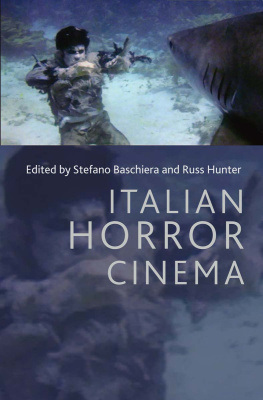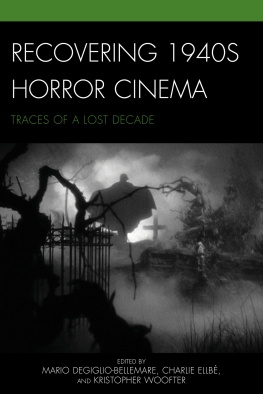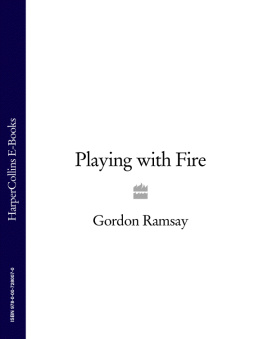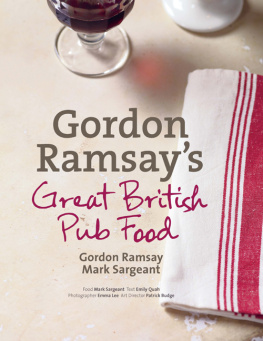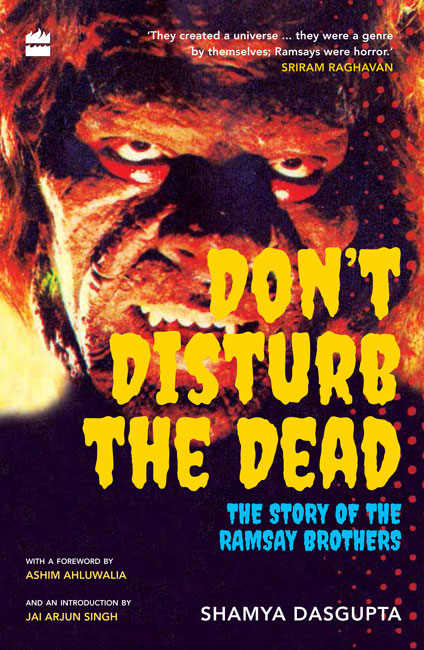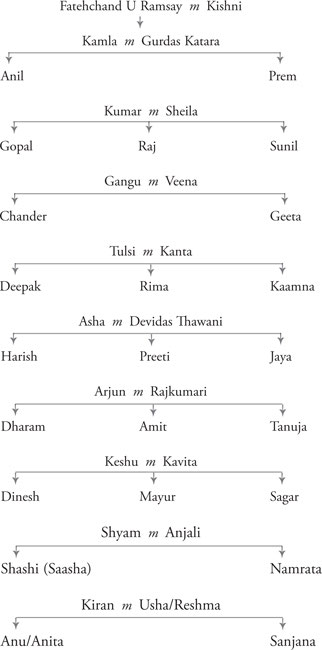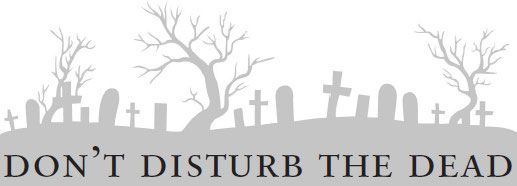The Ramsay Family Tree
THE STORY OF THE RAMSAY BROTHERS
Shamya Dasgupta
For Ajitha and Lio
CONTENTS
Heres a ready reckoner of people who appear with their thoughts, memories and opinions within the covers of this book:
THE RAMSAYS
Amit Ramsay: The second of Arjun Ramsays three children, an entertainment reporter on TV and an aspiring actor
Arjun Ramsay: The fourth of the brothers, who specialized in film editing and handled most of the production
Deepak Ramsay: Tulsi Ramsays son, a director of TV serials and movies, responsible for digitizing and reselling the Ramsay films on television and on DVD
Gangu Ramsay: The second of the brothers; the chief cinematographer for most Ramsay films as well as some outside productions
Kavita Ramsay: Wife of Keshu Ramsay, the fifth of the brothers; a costume designer in a handful of Ramsay films and, now, a fashion designer based in Mumbai and Canada
Mayur (Aryeman) Ramsay: The second of Keshu and Kavitas three sons; an actor-turned-film director
Namrata Ramsay: Shyam Ramsays younger daughter, a TV actor and scriptwriter
Saasha Ramsay: Shyams older daughter and a film-maker; her grand plan is to make a full-fledged franchise with Veerana (1988), one of the Ramsays biggest hits
Shyam Ramsay: The sixth of the brothers; he was one half of the directorial team and is regarded as the creative boss of the films
Tulsi Ramsay: The third of the brothers; the other half of the directorial team and chiefly responsible for working out the business plans
Keshu Ramsay died a few years ago and Kiran Ramsay, the youngest brother, passed away rather suddenly in 2016, while Kumar Ramsay, the oldest of them, doesnt keep great health and was unable to be a part of this project
THE RAMSAYS COLLABORATORS
Aarti Gupta: Model, actor and producer; was in three Ramsay films: Purana Mandir (1984), 3D Saamri (1985) and Tahkhana (1986)
Akshay Kumar: One of the leading actors in mainstream Hindi cinema through the 1990s and 2000s; worked with Keshu in a series of films
Anirudh (Ajay) Agarwal: Actor; was in three Ramsay films, including Purana Mandir, their biggest hit, and some episodes of Zee Horror Show
Bappi Lahiri: Popular music director; composed the songs for ten Ramsay films
Christopher Tucker: Legendary British make-up artist specializing in creating prosthetic make-up; provided the masks for many of the Ramsays monsters
Mohnish Bahl: Actor; was the lead in Purana Mandir and one of the main characters in Sabse Bada Khiladi (Keshu Ramsay, 1995)
Shridhar Raghavan: Script and screenplay writer, who worked with Keshu in Khakee (2004) and Family: Ties of Blood (2006)
THE OUTSIDERS
Anik Dutta: Bengali film director, made the immensely popular Bhooter Bhobishyot (2012)
Beth Watkins: Blogger (Beth Loves Bollywood) and writer on mainstream Indian cinema in various publications around the world since 2005
Jerry Pinto: Journalist, writer, poet and editor; author of Helen: The Life and Times of an H-Bomb and co-author (with Leela Naidu) of Leela: A Patchwork Life
Komal Nahta: Editor and publisher of Film Information, TV anchor and trade expert
Rajesh Devraj: Author (with Edo Bouman) of The Art of Bollywood, scriptwriter, and director of, among other films, Quick Gun Murugan (2009)
Sajid Khan: Film-maker, all-round Hindi film obsessive and funny man
Sriram Raghavan: Director of such critically acclaimed and popular films as Johnny Gaddaar (2007) and Badlapur (2015)
On 5 March 2014, The Indian Express carried a news item with the headline: Shyam Ramsay lashes out at Miss Lovely for wrong portrayal, which went on to condemn my first feature film for its terrible depiction of the Ramsay brothers.
Miss Lovely, made in 2012, was set in the criminal depths of Mumbais C-grade film industry and followed the story of the fictional Duggal brothers, who produced sex-horror films in the mid-1980s.
Shyam Ramsay, who directed some of Indias first horror films, declared that the Ramsays felt victimized: We were targeted, made to look like cheap sex peddlers in Miss Lovely.
It was a strange sensation, I felt totally elated. I couldnt believe that my little film would actually cause the director of such horror classics as Do Gaz Zameen Ke Neeche (1972) and Purana Mandir to even notice. This was the guy who had transformed Trilok Kapoor into a hideous monster in Darwaza (1978), stop-motion fur sprouting from his face and blood squirting from his eyes. It was like a dream come true.
I did, however, feel a little disingenuous cutting out that article and celebrating it, for the simple reason that Miss Lovely wasnt inspired by the Ramsays at all, but by other, more dubious brothers. Like the sovereigns of Indian sleaze, the Singh brothers, who distributed under-the-counter porn such as Hot Wave and Garam Kahaniyan out of a sweaty Connaught Place office in the 1970s, and siblings like Kanti and Kishan Shah, who shot nasty horror films in less than four days, often all at one location in Madh Island.
Ironically, it was the second-rung film-makers who were inspired by the Ramsay brothers style and production methods that, in turn, inspired Miss Lovely. These were the rougher, cheaper, wilder lot: directors like Mohan Bhakri, Vinod Talwar, Harinam Singh, Sheetal, Joginder and J. Neelam. In their time, all unhailed film-makers, making primal, anarchic films and extending the boundaries of the medium.
The Ramsay brothers appear almost gothic in comparison. It is no surprise that the Ramsay Films logo slate has an image of Berninis seventeenth-century sculpture, The Rape of Proserpina. They were classical, restrained and unparalleled. Part Babubhai Mistry-style mythological imagination, part Hammer Horror with baroque design flourishes inspired by 1960s Italian giallo, the Ramsay films are now synonymous with Indian horror movies.
From the ominous stuffed animals littering almost every Ramsay project, to the cavernous castles, hidden tunnels and inexplicably moving objects, their cinematic world had a discrete language. As a film-maker looking back, one can only marvel at just how detailed, unique and distinctive that universe was. The art direction in Bandh Darwaza (1990), for example, is full of definitive Ramsay flair such as the beautiful bat-shaped murti with glowing red-light-bulb eyes. It isnt the storyline or the performances I remember, just those incredible images that are burned into my mind forever.
Much has already been written of their No Stars, No Cars approach, which meant that their cast and crew took the ST bus to locations, and many of their films were shot in and around government guesthouses in Mahabaleshwar. Places where the trains dont stop, thats where our business was, Tulsi Ramsay once said in an interview. They were probably the first Indie production company in the country but have rarely been given that credit.
In a country obsessed with stars, the Ramsays didnt care about names. Yet, to my mind, they gave us one of our greatest screen icons ever Ajay Agarwal (born Anirudh Agarwal), star of Purana Mandir, Bandh Darwaza and 3D Saamri. A six-foot-four-inch civil engineer, Agarwal was their in-house monster, raping and gutting newlyweds and devouring children, and was once described by film critic Grady Hendrix as a glowering, towering presence whose cheekbones look like they were hacked from a tree trunk and whose forehead looks like it could crush stone.


